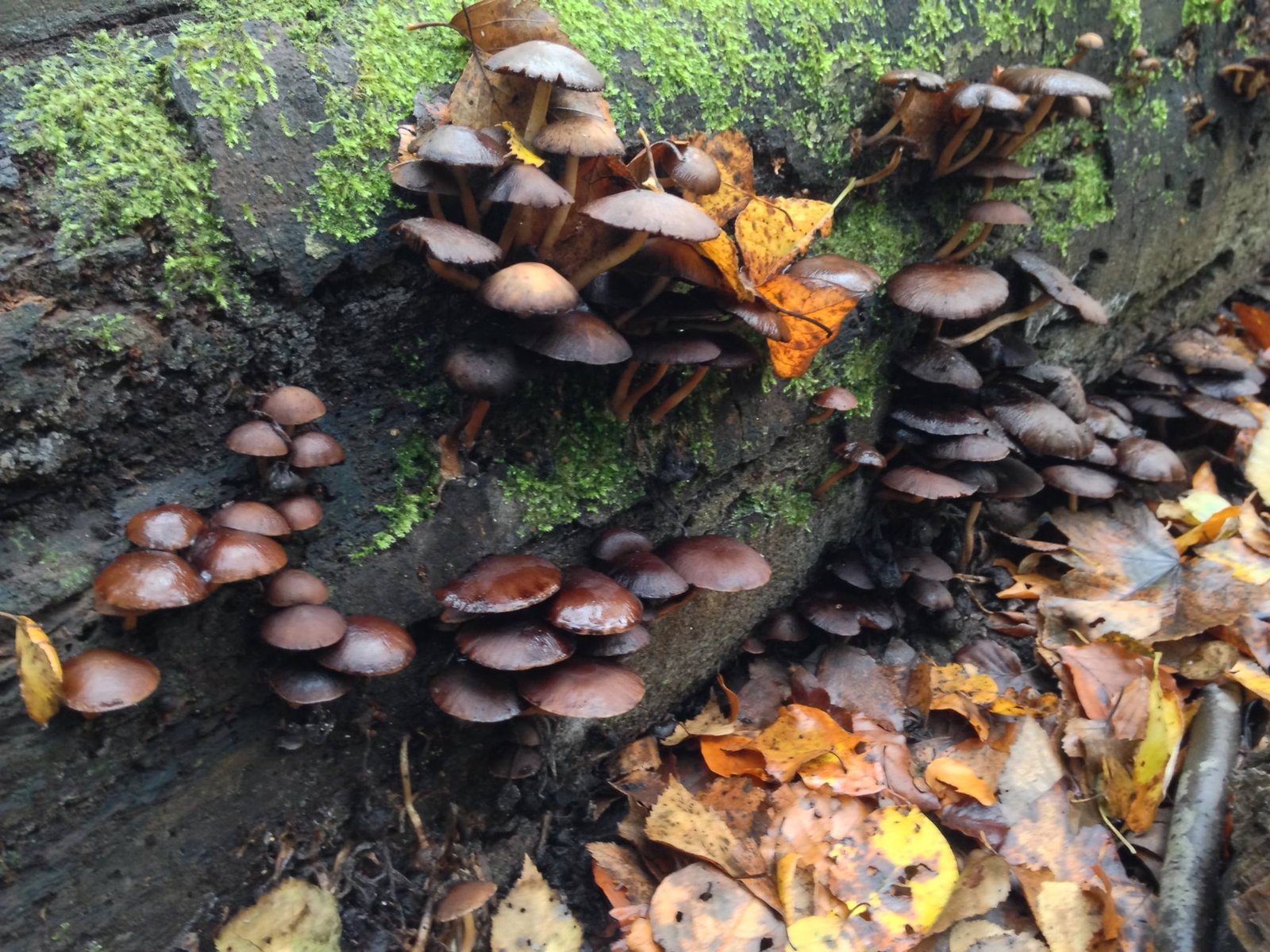General information:Common names: Conocybe intermédiaireClass: Agaricomycetes Familly: Agaricineae Genus: Conocybe Order: Agaricales Phylum: Basidiomycota Usable: Poisonous |
Cap
2.5-5.8 cm in diameter, spreading to slightly sunken when ripe, slimy and shiny when moist, wrinkled-reticulated in the center when dry, hygrophanic, dark reddish-brown in the center when moist, more yellowish-brown towards the margin, with irregular ferruginous brown spots, quickly pale ochraceous to pale beige, with translucent-striated margin up to 1/2 radius, without velar remains
Gills
narrowly adnate to adnexate, plump, very close together, pale brown at first
Stem
4.7-9.5 x 0.3-0.6 cm, equal, enlarged towards the base up to 0.9 cm, fistulous, fibrillose-squamulose below the ring, pale brown towards the apex , dark reddish-brown towards the base
Ring
distinct, membranous, persistent, ridged-furrowed above, smooth below, pale brown
Flesh
pale yellowish brown in the cap, dark brown in the stipe
Smell and flavor
sweet-fungal odor and weakly sweet flavor
Spore
rust brown
basidia
with 4 sterigmata, 15-20 x 6-8 µm
Spores
ellipsoid seen from the front, partly slightly phaseoliform seen from the side, smooth, thin-walled, with distinct small germ pore, 6-8 x 4-4.5 µm
Cheilocystidia
abundant, plump-capitate, with neck up to 2 µm in diam. and flower head 3.5-5 µm diam., 25-40 x 5.5-10 µm
Caulocystidia
in bundles above ring, similar to cheilocystidia, often more variable and larger, 20-55 x 3-10 µm, with capitula up to 8 µm in diameter
Pileipellis
hymenoderm
formed of mostly piriform elements, 35-50 x 18-25 µm
Pileocystidia
absent
Loops
frequent
Ecology
saprotroph
on rotten trunks of deciduous trees, in wood chips, humus near fallen logs
Edibility
potentially lethal
containing amanitines
Remarks
This small ringed Conocybe grows on rotten wood, the preferred substrate for Conocybe.
It belongs to the group of P. filaris and P. rugosa, two potentially fatal species because they contain amanitines.
Compared to the others in the group, P. intermedia is on average the darkest.
P. rugosa, similar and more common, differs in its significantly larger spores, 8.5-10 x 4.7-5.3 µm on average.
P. brunnea is not annuliform.
References
Armin Mesic, Zdenko Tkalcec & Anton Hausknecht. 2007. Two remarkable species of Bolbitiaceae (Agaricales) from Croatia. Österreichische Zeitschrift für Pilzkunde 16: 281-286.
